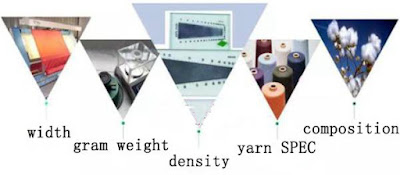For the Mask Factory, What Information, Processes and Requirements do You need to Know?
Whether you have already started a mask factory or are preparing to start one, if you want to manage efficiently and produce face masks that meet the standard requirements, then the following information, processes and requirements will help you, mainly in the following 5 areas.
- Raw materials for mask factory production
- Workshop & equipment and production process
- Mask testing and premarket requirements
- The structure and principle of the face mask
- The main risks of mask production
Raw materials for mask factory production
The products produced by the mask factory are masks, which are generally composed of the following materials.
Main material: common medical mask or protective mask, mainly composed of three layers of non-woven fabric. The inner layer is ordinary non-woven fabric; the outer layer is made of non-woven fabric with waterproofing treatment, mainly used to isolate the liquid sprayed by the patient; the middle filter layer with is meltblown non-woven fabric (some after electret treatment to improve the filtration efficiency.)
Accessory materials: metal nose clips, elastic material (for mask earloops), hot air cotton, etc.
One of the main filtering efficiency is the intermediate layer material meltblown cloth. The main performance index of the medical mask filter material is BFE (bacterial filtration efficiency), for example, the bacterial filtration efficiency of N95 mask is 95%.
The mask factory should choose the filtration efficiency and the gram weight of the meltblown fabric according to the type of mask to be produced. For example, disposable medical masks generally choose 20g/m2 of BFE95% meltblown fabric, but N95 masks generally use 40g/m2 for better protection.
When choosing a filter material supplier, you should pay attention to the BFE filtration efficiency report of the filter material, and there are currently internationally recognized authorities such as NELSON (Nelson Laboratory) and NIOSH (National Institute for Occupational Safety and Health).
In addition, if medical surgical masks are produced, mask manufacturers should pay attention to the biological compatibility of raw materials. If the supplier can provide biological test reports (cytotoxicity, skin irritation, delayed hypersensitivity test) of raw materials, it will save time and cost for biological evaluation of finished masks.
Workshop & equipment and production process
Sterile masks are generally produced in cleanroom (cleanroom Wikipedia), and the production equipment for masks is mainly automatic mask manufacturing machines, but also a small part of semi-automatic mask manufacturing machines.
Mask manufacturing machine mainly includes flat mask manufacturing machine, folding mask manufacturing machine, and cup mask manufacturing machine, which can be used to produce medical surgical masks, FFP masks, N95 masks, KF94 masks, KN95 masks, etc.
If the mask factory produces sterile medical masks, the sterilization process will be involved. Currently the vast majority of mask factories choose ethylene oxide (EO sterilization). Irradiation sterilization is not recommended and it is said that irradiation sterilization may result in bacterial filtration efficiency not passing.
It should be noted that the ethylene oxide sterilized masks need to be analyzed. Because after ethylene oxide sterilization, there will be ethylene oxide residue on the mask, and ethylene oxide is a toxic carcinogenic substance, long-term inhalation not only stimulates the respiratory tract, but also has a strong carcinogenic potential. Long-term small amount of exposure is seen to have neurasthenia syndrome and plant nerve dysfunction.
Therefore, the medical masks sterilized by ethylene oxide must be analyzed to release ethylene oxide and be tested and qualified before they can leave the factory for market. It takes 14 days to analyze, which is a verified ethylene oxide analysis time for enterprises to ensure that the residual ethylene oxide content in the masks is below the safety standard of 10ug/g. In addition, ethylene oxide sterilized masks should be selected with breathable packaging materials. Otherwise, it is difficult to achieve the sterilization effect.
Mask testing and premarket requirements
Medical mask product testing includes delivery inspection and conformance testing (conformance testing wikipedia). Delivery inspection items should be at least the following items: appearance, structure and size, nose clip, earloops, microbiological indicators, ethylene oxide residue (if using ethylene oxide sterilization).
Surgical Masks – Premarket Notification [510(k)] Submissions, if you want to know the access conditions, look here. Conformance testing (conformance testing wikipedia) should be the full performance test of the product standard of mask, you should choose a qualified inspection institute, such as SGS inspection and certification organizations.
Considering the incoming inspection of raw materials and the delivery inspection of masks, mask factory should be equipped with basic inspection instruments, such as electronic scales, dynamometers, micrometers, vernier calipers, rulers, etc.. If the microbial indicators and ethylene oxide residues are self-testing, you need to have a microbiology laboratory and the corresponding instruments.
Considering the incoming inspection of raw materials and the delivery inspection of masks, mask factory should be equipped with basic inspection instruments, such as electronic scales, dynamometers, micrometers, vernier calipers, rulers, etc.. If the microbial indicators and ethylene oxide residues are self-testing, you need to have a microbiology laboratory and the corresponding instruments.
Mask testing common items are bacterial filtration efficiency, breathing resistance, air tightness, if it is a medical mask, also need to test the anti-blood penetration performance, different countries and regions have different requirements, but it is similar in general. For example, the European medical mask standard EN ISO 14683 and the U.S. medical mask standard ASTM F2100, performance requirements are listed below.
| main indicators | EN 14683 | ASTM F2100 |
| BFE (bacterial filtration efficiency) | Type Ia ≥ 95% Type II ≥ 98% Type IIR ≥ 98% | Level 1 ≥ 95% Level 2 ≥ 98% Level 3 ≥ 98% |
| Resistance to penetration by synthetic blood | Type Ia , Type II not required Type IIR ≥ 16.0kPa | Level 1, 80mmHg Level 2, 120mmHg Level 3, 160mmHg |
| Differential pressure | Type Ia < 40Pa/cm2 Type II < 40Pa/cm2 Type IIR < 40Pa/cm2 | Level 1 < 5.0mm H2O/cm2 Level 2 < 6.0mm H2O/cm2 Level 3 < 6.0mm H2O/cm2 |
- BFE (bacterial filtration efficiency) — the effectiveness of medical face mask material in preventing the passage of aerosolized bacteria, expressed in the percentage of a known quantity that does not pass the medical face mask material at a given aerosol flow rate.
- Differential pressure — the measured pressure drop across a medical face mask material.
- Resistance to penetration by synthetic blood — the ability of a medical face mask to withstand penetration of synthetic blood projected at a given pressure.
The structure and principle of the face mask
Medical masks are generally composed of meltblown fabric, non-woven fabric, earloops and nose clips, of which the outer and inner layers are made of non-woven fabric and the middle layer is made of meltblown fabric. The outer layer of the mask has anti-splash function, the middle layer is the core material for filtering droplets, particles or bacteria, and the inner layer mainly plays the role of moisture absorption.
Most of the medical masks are self-absorbing filter masks, whose working principle is to make the air containing harmful substances filtered through the filter media of the mask before being inhaled or exhaled. The filtering principle of the mask materials are mainly as follows.
1 Electrostatic adsorption: Deposition of particles adsorbed by the electrostatic action of the filter fiber.
2 Diffusion deposition: Particles are diffusely displaced by Brownian motion to the filter fiber and are adsorbed by molecular gravity. Most likely to capture small-scale particles, fine fibers and particles moving at low speed.
3 Interception deposition: Larger particles moving with the airflow are intercepted by the mechanical filtration of the filter material. The ratio of particle diameter to the diameter of the filter membrane fiber affects the interception efficiency.
4 Inertial deposition: When the particles pass through the mesh channel of the filter material, the particles hit the filter fiber due to inertia and are retained by molecular gravity. Large particles, high density, fast speed when the interception effect is good.
The smaller the particle, the stronger the first two deposition effects, and the larger the particle, the better the last two effects, so it is not the smaller the particle the more difficult it is to be filtered. Combining the synergistic effects of the four filtration mechanisms, the range of the most easily penetrated particle size for ordinary mechanical filter media is 0.1µm to 0.3µm.
The main risks of mask production
The masks need to be quality assessed according to the relevant standards during the production process in order to avoid potential hazards. Mask factories should take corresponding measures according to the table below, combined with the characteristics of the masks themselves, to ensure that the risk is reduced to an acceptable level.
| Possible hazards | Formation factors | Control measures |
| Biological contamination | Products are not disinfected or sterilized, or not up to standard. | Strict control of disinfection or sterilization process with clear process and batch inspection. |
| Biocompatibility | Production brings harmful substances, such as ethylene oxide residue exceeds the standard. | Raw material entry inspection, strict control of sterilization process |
| Irregular labeling | The minimum packaging of the product is not clearly and correctly marked. | Marking printing is clear and correct, marking content is marked comprehensively according to relevant requirements. |
| Mask use error | Lack of detailed instructions for use and necessary warnings, such as single-use only. | Standardized instructions. |
| Mask defective products | Between the components of the mask sewing, bonding is not tight, material damage, etc. | Strict control of production process and product inspection. |
| Damaged packaging | The packaging is broken during production, packaging, transportation and storage. | Strictly control the packaging process. |
| Environmental contamination | The production environment has contaminants, such as dust and bacteria. The raw material is contaminated and the transportation link is contaminated. | Strict control of production environment, strict control of raw material procurement and inspection, strict control of finished product storage and transportation. |
The safety and effectiveness of the mask is only part of the protective effect of the factors. The correct use of the mask and wearing method will also directly affect the protection effect. Therefore, all the information required by the user should be clearly marked in the instruction manual to avoid misuse of the mask and reduce the risk of cross-infection.
For example, it should indicate the wearing method, the identification method of the front and back of the mask, the recommendation of the use time, and the level of the filter material or related instructions. In addition, medical workers do not have a clear understanding of the scope of application of different types of medical masks, so the scope of application of masks should be clearly stated in the instructions and the training of health care workers should be strengthened.






评论
发表评论